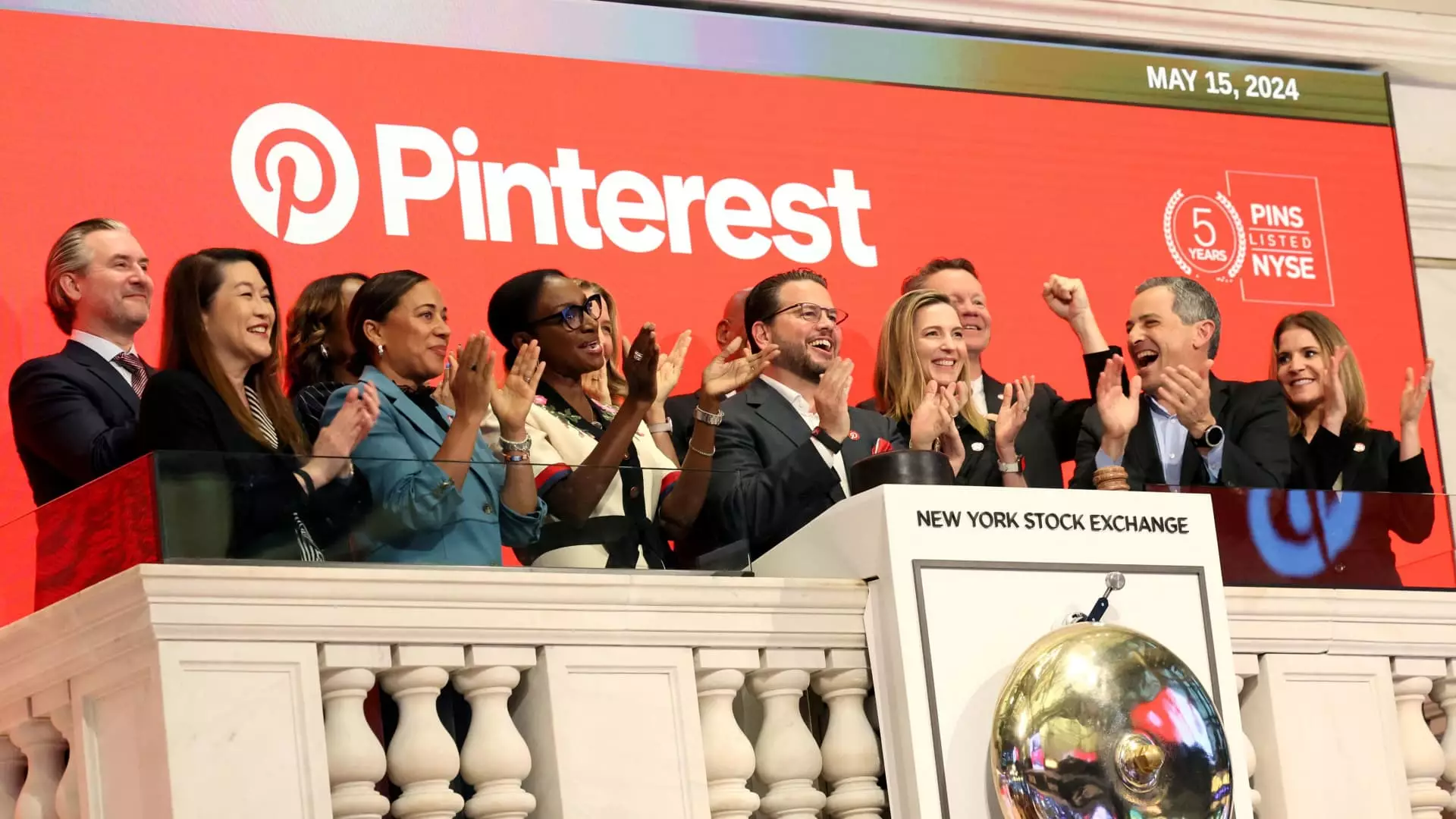On Thursday, Pinterest saw its shares tumble by 15%, an unexpected downturn given that the company reported better-than-expected earnings for the third quarter. Such a significant drop in share prices highlights the complexity of the market dynamics at play, where analytics reveal an underlying struggle despite surface-level success. While Pinterest’s revenue for the quarter reached $898 million, surpassing the expected $896 million, the cautious outlook for the fourth quarter has investors worried. As this article delves into the nuances of Pinterest’s financial performance, it will explore the contributing factors to its share price drop and the broader industry context.
Pinterest’s third-quarter results showcased a marked revenue increase of 18% compared to the previous year’s $763.2 million, alongside earnings per share of 40 cents adjusted versus the anticipated 34 cents. However, the company projected fourth-quarter revenues between $1.125 billion and $1.145 billion, with the midpoint guiding lower than analysts expected, at $1.135 billion versus $1.143 billion. This forecast undeniably alarmed investors who had anticipated a more consistent growth trajectory. The stark reality is that despite current achievements, aspirations for future quarters weigh heavily on performance outlooks, creating an uneasy atmosphere for Pinterest stakeholders.
CFO Julia Donnelly noted that Pinterest has faced ongoing challenges, particularly from the food and beverage sector within the consumer packaged goods market. This sector’s struggles are a reflection of broader economic realities that often trickle down to affect advertising spend across social media platforms. The sentiment from advertisers in this category may signal a more extensive issue that could hinder Pinterest’s sales growth as we transition into the next quarter. With Donnelly indicating concerns about continuous weakness in this area, investors must consider how entrenched habits of consumer behavior can affect revenue even in a post-election environment where engagement might have been expected to surge.
Despite a substantial net income increase of 354% year over year to $30.56 million, Pinterest reported a 17% rise in total expenses, reaching $904 million. This expense growth, while not inherently negative, raises questions about sustainability and profit margins in the long run. Donnelly highlighted these rising costs as necessary expenditures on research and development, particularly focusing on acquiring talent in the artificial intelligence sector. Although investing in technology is vital for competitive advantage, such escalated costs can be worrisome if they consistently outpace revenue growth.
The fluctuating performance of major players in the tech sector offers a broader context to Pinterest’s challenges. Competitors like Amazon and Meta disclosed their advertising gains, demonstrating robust year-over-year growth that underscores the ongoing demand for online advertising. However, even these giants are not immune: Meta’s recent struggles with user growth and projected significant infrastructure costs indicate that the obstacles Pinterest faces are omnipresent in the industry. As advertising revenues remain a crucial element for the survival of social media platforms, the pressure is on Pinterest to adapt effectively.
Pinterest’s recent third-quarter reports, when considered in conjunction with lowered forecasts and external pressures, illuminate a precarious position for the company within the competitive landscape of online advertising. Despite strong growth metrics and an impressive boost in user engagement—recording 537 million global monthly active users—the concerns raised during the earnings call present a pressing need for strategic navigation amidst uncertainty. A proposed $2 billion share buyback program may suggest confidence in recovery, yet the market’s response indicates a profound wariness. As Pinterest moves forward, monitoring these variables and adapting promptly will be crucial for regaining investor trust and achieving long-term success.

